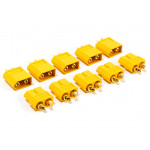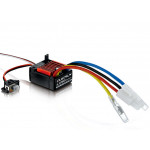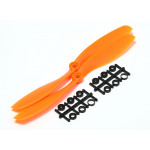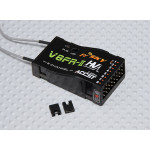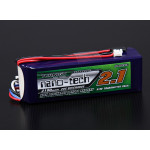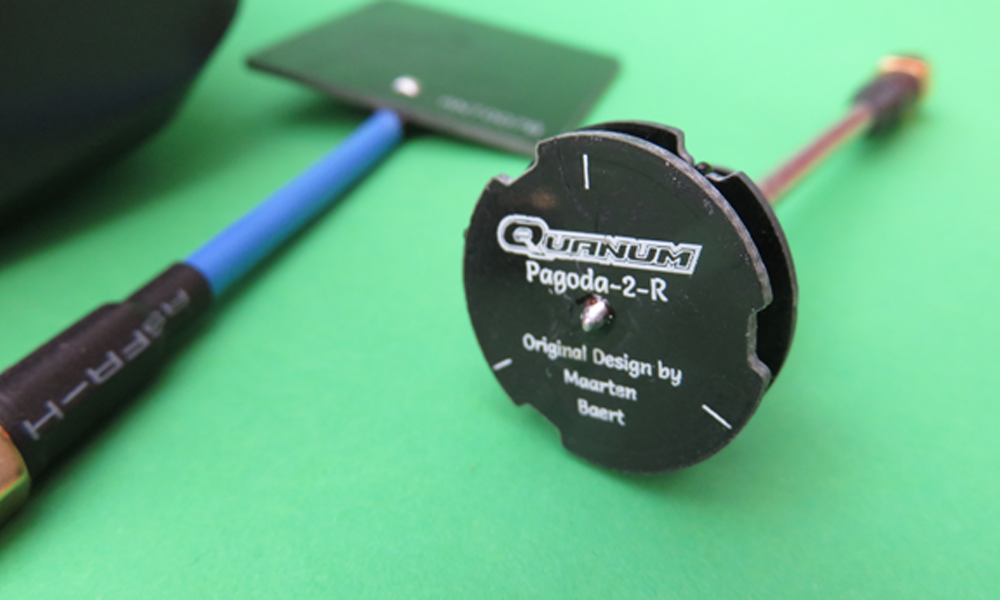
If you have been in FPV for any length of time you’ll be familiar with the cloverleaf antenna which essentially made 5.8ghz viable.
Before that time, we all spent time fussing around trying to get our FPV systems to work. Just tilting the plane into a banking turn was enough to lose video signal. For the people that turn up today, plug it in and it just works don’t know what they missed. Pagodas are the latest generation of 5.8Ghz antennas that are rapidly gaining traction in the FPV community. It is now very common to see mini quad racers replacing their cover leaf antennas for Pagodas and for good reason. In this article, I will explain just what Pagoda antenna is and what advantages they offer you over other antenna types?
So what is a Pagoda Antenna anyway?
A Pagoda is similar in size to a cloverleaf or skews planar wheel antenna. The first thing you notice is the metal wire lobes have been replaced with circular PCB disks with a pre-etched copper trace on the board. The etched copper tracks are actually the antenna. Just like the cloverleaf or skew planar, these are also omnidirectional circular polarized antennas. 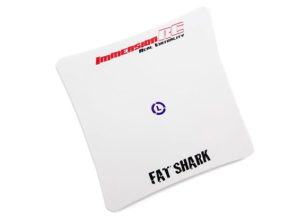 The antenna has become a major part of FPV and for that reason, you need to be equipped with knowledge on how to get the best one, and how to maximize your antenna. Directional antennas are best for anyone hoping to increase the signal strength as well as the distance covered by the antenna. However, they are not the best choice for close FPV flights. An example of a directional antenna could be a Fatshark patch antenna. Omnidirectional antennas are good at radiating and receiving an RF signal in all directions. These antennas are widely used in wireless devices like mobile phones, CB radios, and wireless routers. The coverage pattern of the antenna looks like a sphere whereas a directional antennal is focused like a torch beam. Some Fundamental points:
The antenna has become a major part of FPV and for that reason, you need to be equipped with knowledge on how to get the best one, and how to maximize your antenna. Directional antennas are best for anyone hoping to increase the signal strength as well as the distance covered by the antenna. However, they are not the best choice for close FPV flights. An example of a directional antenna could be a Fatshark patch antenna. Omnidirectional antennas are good at radiating and receiving an RF signal in all directions. These antennas are widely used in wireless devices like mobile phones, CB radios, and wireless routers. The coverage pattern of the antenna looks like a sphere whereas a directional antennal is focused like a torch beam. Some Fundamental points:
- Omni-directional antennas have a circular radiation pattern and are good for short distances
- Directional antennas are good for receiving or transmitting a signal from longer distances.
- A combination of these antennas through a diversity system can make for a bulletproof setup.
These characteristic makes the patch and pagoda antennas so attractive to mini quad pilots. There is simply nothing on the market today that is better than the pagoda. I have found the Quanum pagodas to exceed the performance of similar models and although they share similarities, that’s where it ends. A great example is the Quanum Pagoda-2 Omnidirectional Antenna 5.8GHz RHCP-SMA available at HobbyKing Subtle changes in material, plate thickness and even the color of the PCB can change the performance of the antenna. So before you run off to the cheapest supplier, consider that not all pagodas perform the same. I will save you (and me) the torture of the science and technical aspects of the pagoda antenna design but if it does interest you then I suggest you take a look at Maarten Baert’s website.
Why a Pagoda Antenna?
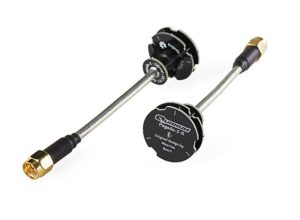 One of the main gripes with traditional cloverleaf and skew planar antennas was the lobes would often be damaged in a crash. The soldered joints would part ways and the antenna was never the same again. The pagoda has changed all that because it’s made from glass reinforced board and it’s tough. The design means that it's much easier to ensure a quality product is delivered time and time again. The cloverleaf could have some spectrum movement with changes in lobe length, solder size, and even wire size. The Improved Axial ratio also reduces multipath interference along with a more uniform radiation pattern.
One of the main gripes with traditional cloverleaf and skew planar antennas was the lobes would often be damaged in a crash. The soldered joints would part ways and the antenna was never the same again. The pagoda has changed all that because it’s made from glass reinforced board and it’s tough. The design means that it's much easier to ensure a quality product is delivered time and time again. The cloverleaf could have some spectrum movement with changes in lobe length, solder size, and even wire size. The Improved Axial ratio also reduces multipath interference along with a more uniform radiation pattern.
Quanum Pagoda Antenna
I got these on special for a crazy $9 for a set of two and it might well have been the cheapest pagoda antenna you could find anywhere on the new. I don’t know how often HobbyKing has these crazy sales but they are worth paying full fare anyhow. These come shipped in a no-frills packet, however, don’t let that cloud your judgment. These antennas are probably the best on the market and that’s been noted by many in the community. Not sure what HobbyKing did that others didn’t but I manage to be able to fly further and into areas where my signal will generally suffer without any degradation. The Quanum Pagoda antennas have pliable antenna stems so that they can be bent and shaped to an angle you prefer. There are 3 PCB disks soldered to the coax cable at specific distances. These gaps are incredibly important to the way the antenna works. Altering the distance will affect the frequency that the antenna is tuned for. As an example, the antenna might be tuned for 5850mhz. Moving the disks might change this to 5898mhz and although it does not seem like much it will affect the performance of the receiver. If you happen to damage the antenna and need to readjust or verify the PCB distances, you can refer to Marten Baerts website for the designs. At 9.9 grams these are similar in weight to many of the other pagoda antennas on the market. I have used the pagodas on both FatShark's HD3 and the Quantum Cyclops V2 FPV Goggles and both had a noticeable improvement in signal strength.
Fatshark Diversity Receiver
We all know that the immersion receivers are pretty lame. If you would like a proper receiver with worlds apart signal and picture differences then you cannot go past a diversity receiver.
Directional Patch Antenna / Beam Antennas
I thought it was worth including a few patch antennas because to get the most from your pagoda you need diversity. By using a pagoda and a patch you’re FPV experience is going to be greatly improved. These antennas radiate or receive greater power in specific directions allowing for increased performance and reduced interference from unwanted sources. Directional antennas provide increased performance over dipole antennas - or omnidirectional antennas in general – when a greater concentration of radiation in a certain direction is desired. Directional antennas are able to cover a greater distance but only when focused. Imagine a globe found in a torch or headlight in your car, when this is illuminated without a reflector it is able to dimly light up the surrounding area. When we fit a reflector we can concentrate the light energy into a beam. Radio works much the same as we are able to shine that RF energy in a given direction. This means that although we are able to get greater distances those two lights or antennas need to be pointed at one another. Get more range as they essentially stretch the water balloon, increasing range but reducing coverage. Directional antennas are able to focus on a long but narrow beam. Omnidirectional antennas, on the other hand, are when you squash the balloon, increasing its coverage while reducing range. These antennas have very wide beams that are not very long. When used in combination with a diversity receiver the patch antenna is perfect for VTX signals from afar whereas the pagoda is great for up-close.
Antenna Diversity
Many systems now incorporate antenna diversity for improved signal performance. These systems make use of dual receiver systems (called diversity receivers) which will monitor the signal from both antennas and switch to the one that gets the best reception. Some FPV systems combine two (or more) types of antennas on the ground receiver allowing for better signal coverage. This could include one directional antenna and a CP to give you good coverage. So there you have it. Pagodas are great but better with diversity. Happy landings

